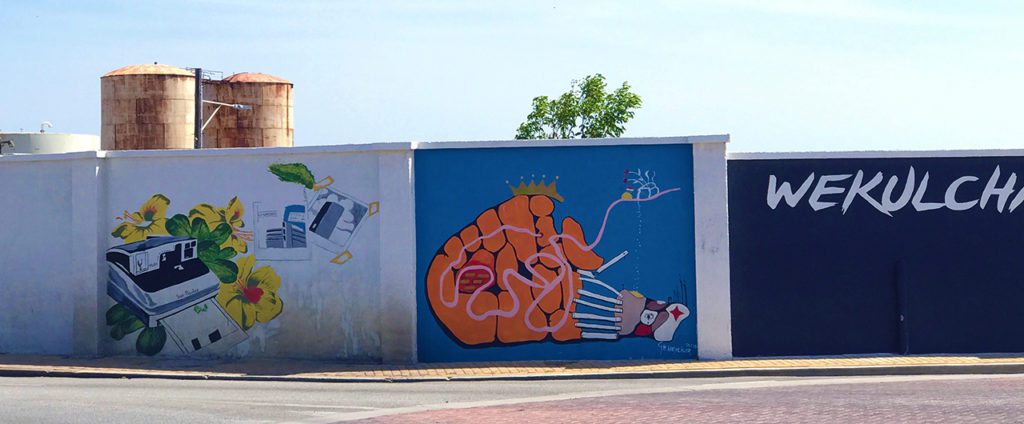By Alexander Britell
SAN NICOLAS — The Aruba Rum Shop has been here on Route 1 for almost eight decades, since the beginning of the oil refinery, when a small bottle of rum was precisely what you needed at the end of a hot, dry day.
On Fridays, payroll would arrive and the rum shops would pack, workers scrambling from the gate right to the bar counter, standing to drink in a bar without even a single stool.
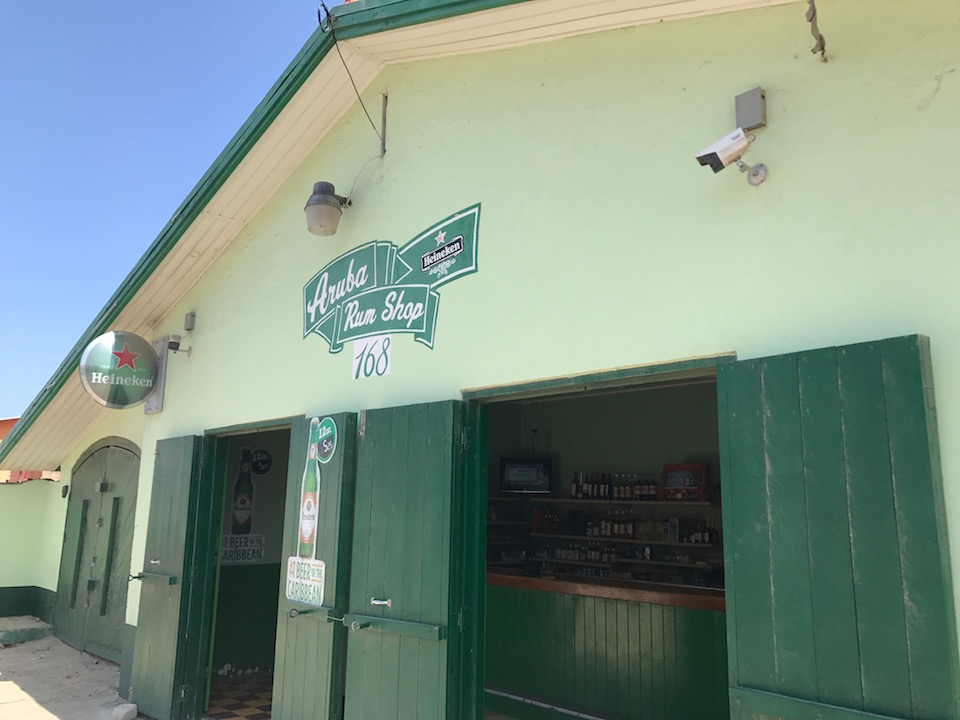
On a Wednesday afternoon, the Aruba Rum Shop is quiet, the shelves have more whisky than rum, and Balashi beer is the drink of choice.
There are still no stools.
San Nicolas, Aruba’s “Second City,” has led many lives, from its days as a harbor for the gold mines here to serving as a fuel hub for the Allies in the second World War to years as a gritty nightlife spot.
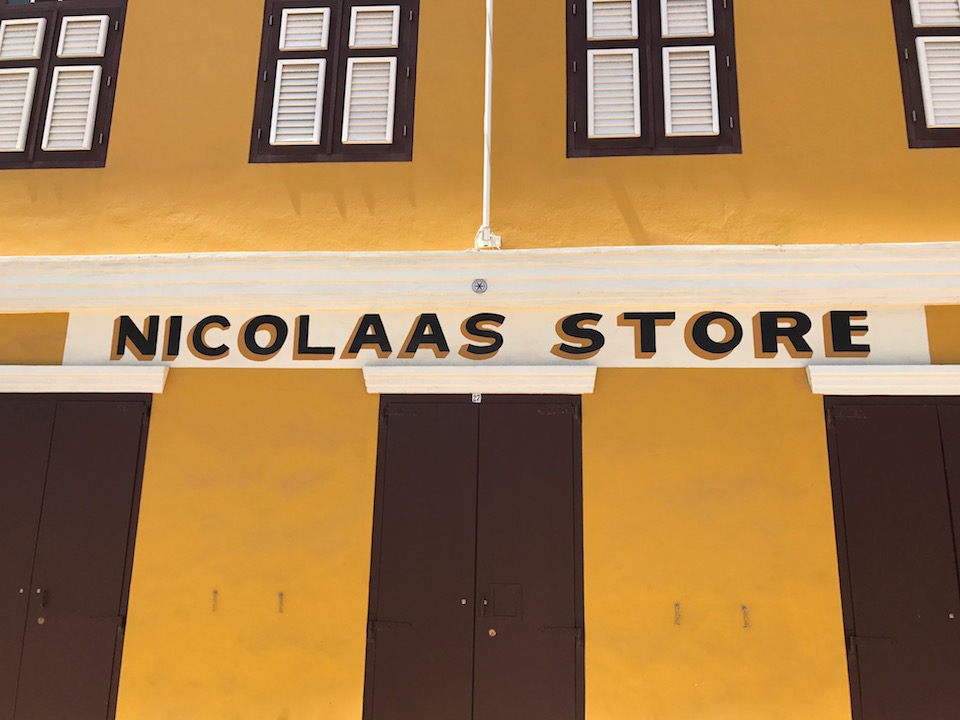
And today, it is beginning another new life.
As you walk around, the streets are silent but the walls are loud, filled with bright, colorful murals painted by a collection of artists from around the world.

In the shadow of the refinery, an art capital is quietly beginning to build.
This is the new San Nicolas, a place that is starting to become a magnet for all that is young, cool and hip in Aruba.

The murals have multiplied — as have the museums — and there’s now even an annual Art Fair for three days in September, bringing together local and international artists with a mix of art, music, dance and crafts.
Last year, “Cosecha” opened its doors on the main thoroughfare in town, a cutting-edge art space highlighting the works of a curated group of local artists, with a focus on handmade art.
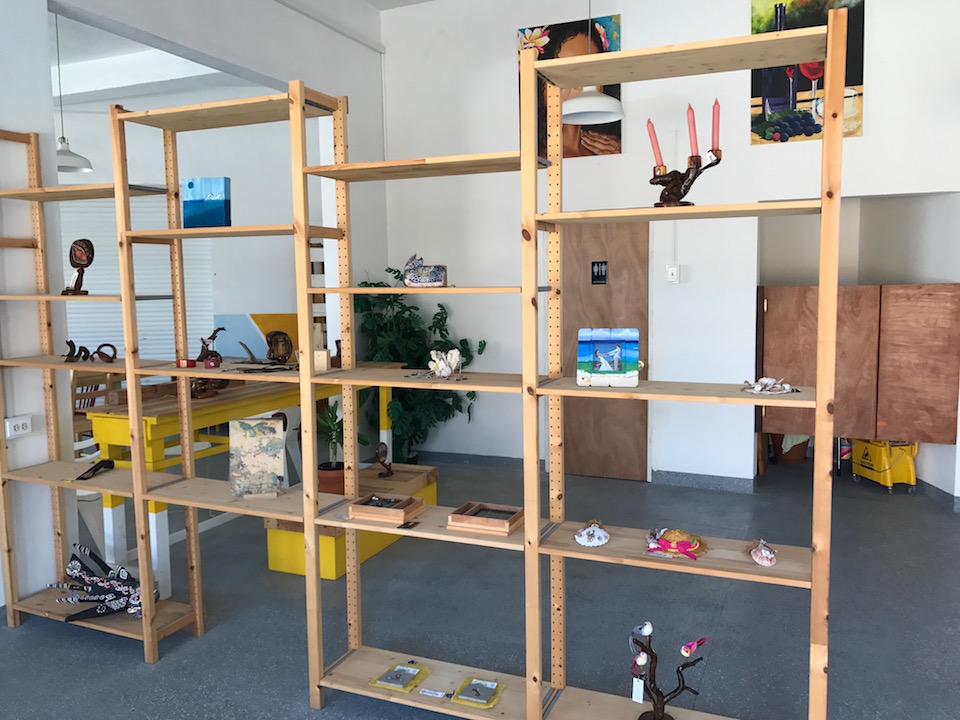
Cosecha.
It’s filled with beautiful pieces, from small bracelets to traditional canvas prints; there’s the feel of a sort of local art concept store.
Cosecha, which means “harvest,” is the sister outpost of an Oranjestad-area art space that opened in 2015, part of a push to emphasize all that is authentic — and local — in Aruba.
It’s the sort of place you expect to find in an art destination that’s just beginning to find itself.

Indeed, San Nicolas has all of the ingredients of an emerging cultural hub — varied history, interesting architecture, and, perhaps most importantly, an urban layout that makes it decidedly walkable.
Just across the street is O’Neil Caribbean Kitchen, the city’s best restaurant, serving a menu of classic Aruban dishes from garlic conch to “stamp and go,” a local variety of saltfish fritters.
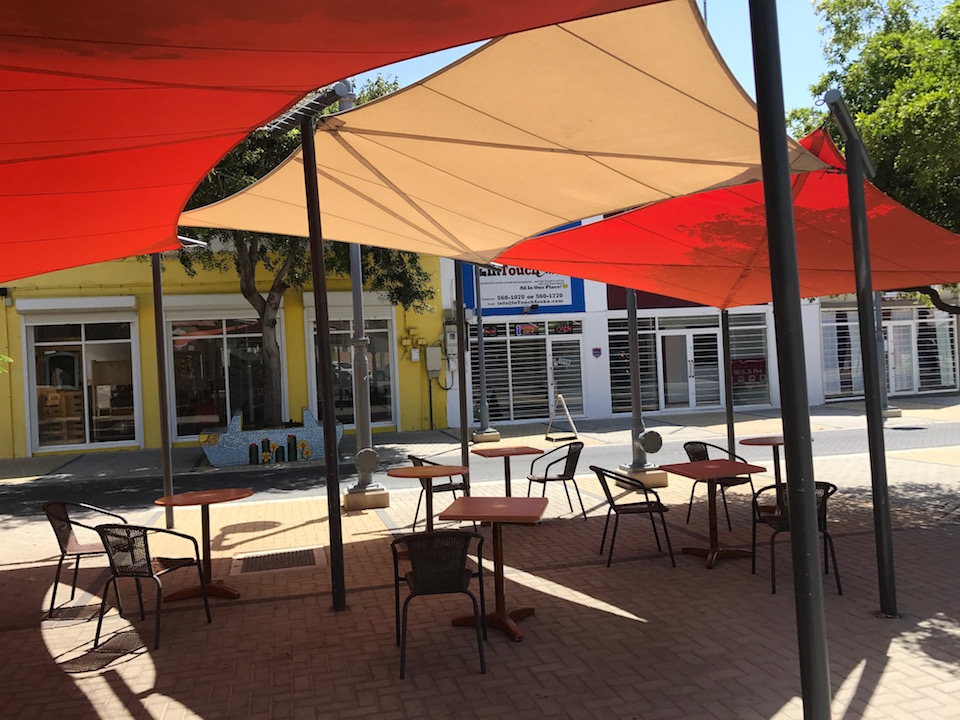
O’Neil’s Caribbean Kitchen is San Nicolas’ must-visit eatery.
It’s all starting to add up to a new culture destination in Aruba, says Naomi Van der Biezen, who works at the Museum of Industry, a converted water tower that highlights the various transformations of San Nicolas over the decades.
Van der Biezen said more people are starting to look at San Nicolas, from artists to young people, searching for a new kind of opportunity in a different corner of the island.
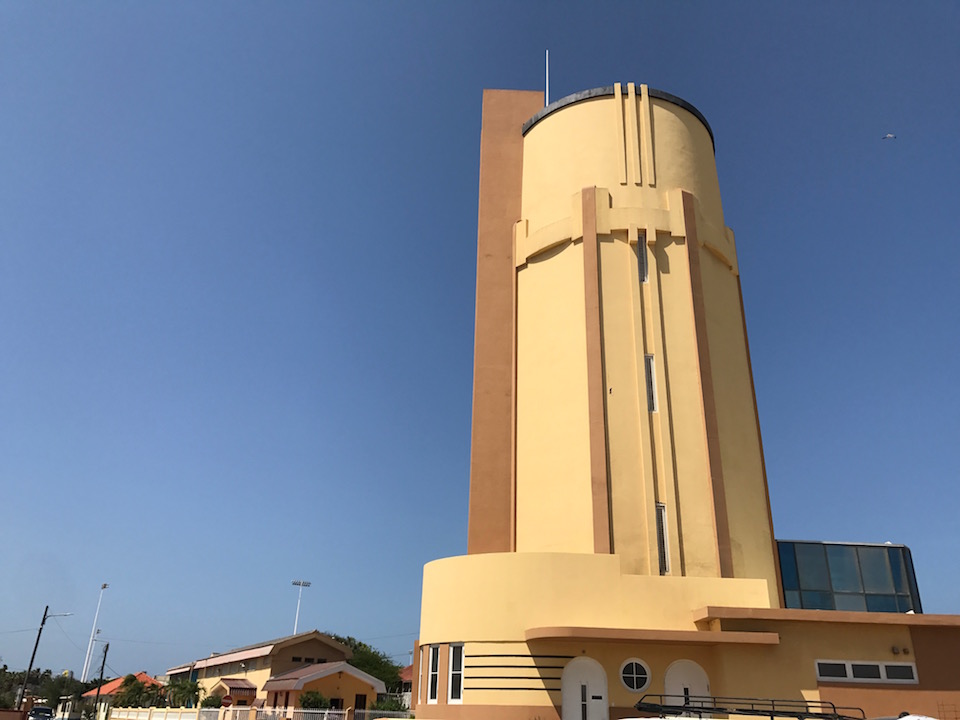
The Museum of Industry is housed in this converted water tower.
“I think it’s the younger people taking over on this part of the island,” she says. “It’s a renaissance.”
Just past the Museum of Industry sits the Aruba Rum Shop, one of the few rum shops that still remain in San Nicolas, as over the years others have gradually faded back into the landscape.
It’s a piece of San Nicolas that has never changed, a fixed point in a fluid city that has lived many lives — and now is being reborn again.
